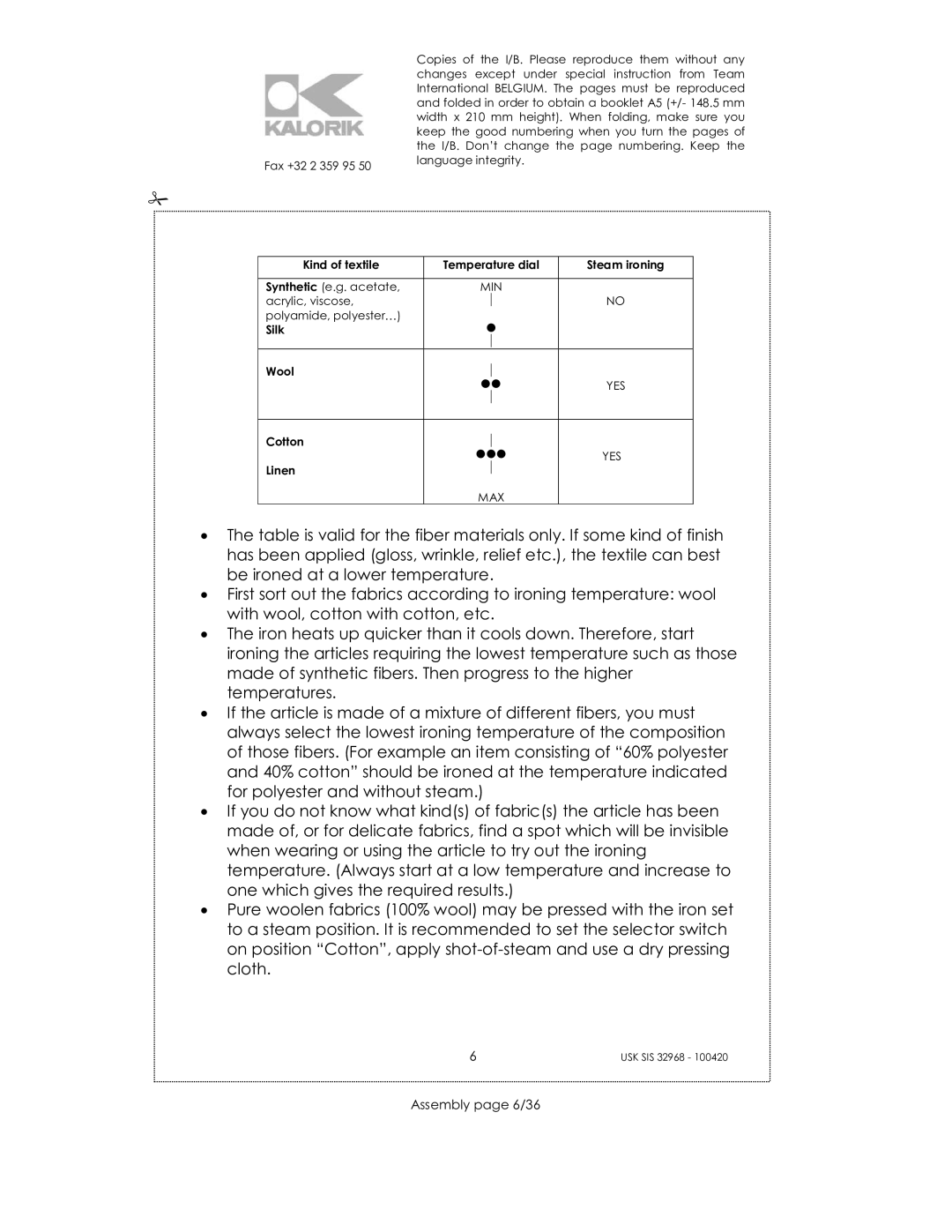SIS 32968 specifications
The Kalorik SIS 32968 is an advanced and versatile kitchen appliance designed to simplify food preparation and cooking. This multifunctional device combines several cooking methods, making it an essential tool for modern kitchens. With its innovative features and technologies, the Kalorik SIS 32968 enables users to enjoy a variety of healthy and delicious meals with ease.One of the standout features of the Kalorik SIS 32968 is its air frying capability. This technology allows users to achieve crispy, golden-brown results with significantly less oil than traditional frying methods. The air frying process circulates hot air around the food, ensuring even cooking and reducing the need for added fats. This feature is ideal for health-conscious individuals looking to indulge in their favorite fried foods without the guilt.
In addition to air frying, the Kalorik SIS 32968 also offers grilling, baking, roasting, and toasting functions, making it a truly multifunctional appliance. Users can easily switch between modes to prepare a wide range of dishes, from succulent grilled meats to delightful baked goods. The device's user-friendly interface and adjustable temperature settings ensure precise cooking tailored to individual preferences.
The Kalorik SIS 32968 is equipped with a generous cooking capacity, making it suitable for families and gatherings. Its spacious interior can accommodate larger portions, allowing users to prepare meals for multiple people at once. The easy-to-clean non-stick interior further enhances the user experience, as it minimizes mess and cleanup time.
Another key characteristic of the Kalorik SIS 32968 is its built-in safety features. The appliance comes with an automatic shut-off function that activates when the cooking is complete, preventing overcooking and enhancing user safety. Additionally, the cool-touch handle ensures safe handling while the device is in use.
The design of the Kalorik SIS 32968 is both stylish and functional. Its sleek appearance complements any kitchen decor, while its compact size makes it easy to store when not in use. The intuitive control panel features digital displays for clarity, allowing users to monitor cooking progress effortlessly.
Overall, the Kalorik SIS 32968 is a versatile and efficient kitchen appliance that revolutionizes the cooking experience. With its combination of air frying, grilling, baking, and other functions, it empowers users to create a wide variety of healthy and delicious meals with minimal effort.

